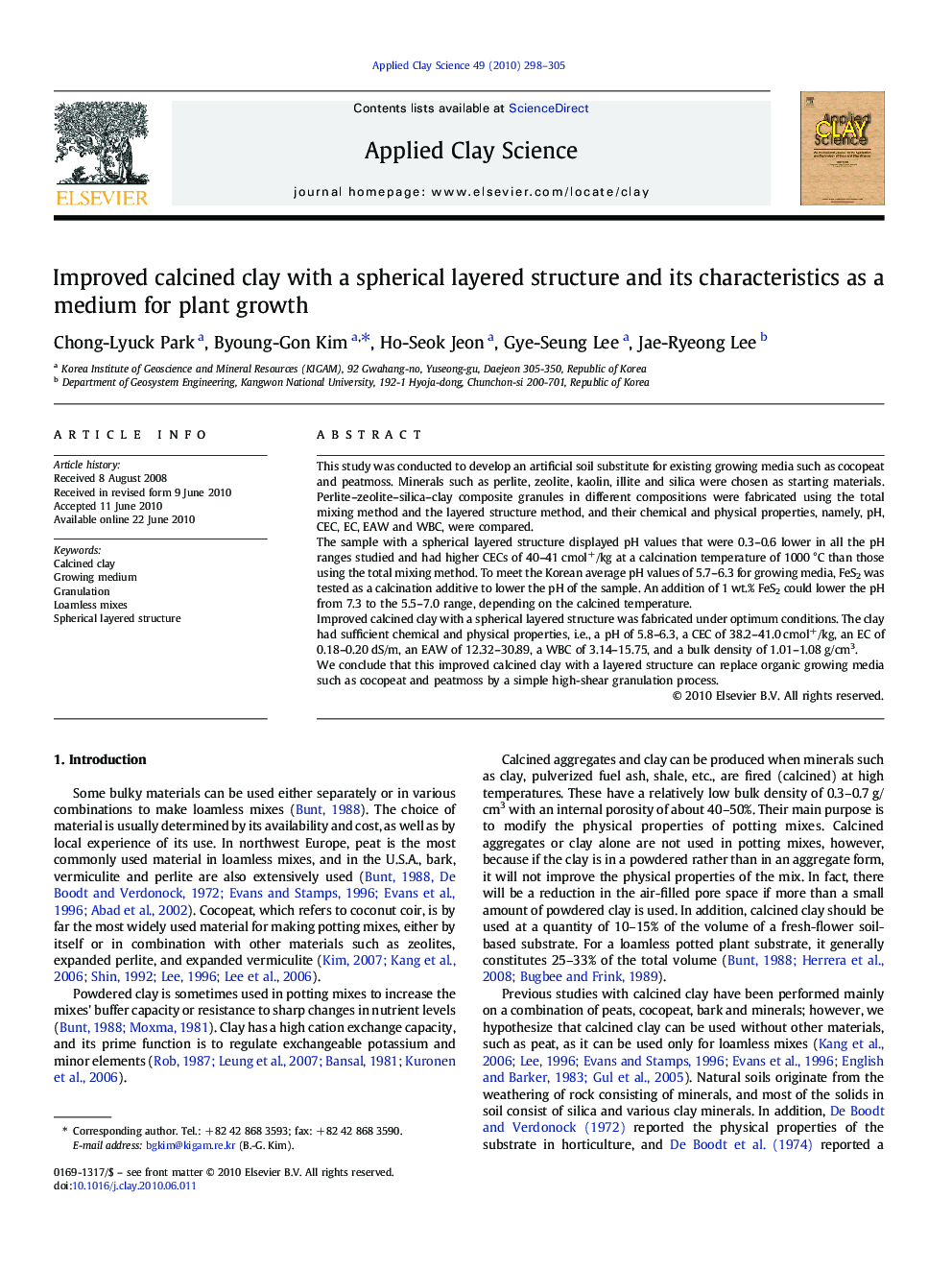| Article ID | Journal | Published Year | Pages | File Type |
|---|---|---|---|---|
| 1695868 | Applied Clay Science | 2010 | 8 Pages |
This study was conducted to develop an artificial soil substitute for existing growing media such as cocopeat and peatmoss. Minerals such as perlite, zeolite, kaolin, illite and silica were chosen as starting materials. Perlite–zeolite–silica–clay composite granules in different compositions were fabricated using the total mixing method and the layered structure method, and their chemical and physical properties, namely, pH, CEC, EC, EAW and WBC, were compared.The sample with a spherical layered structure displayed pH values that were 0.3–0.6 lower in all the pH ranges studied and had higher CECs of 40–41 cmol+/kg at a calcination temperature of 1000 °C than those using the total mixing method. To meet the Korean average pH values of 5.7–6.3 for growing media, FeS2 was tested as a calcination additive to lower the pH of the sample. An addition of 1 wt.% FeS2 could lower the pH from 7.3 to the 5.5–7.0 range, depending on the calcined temperature.Improved calcined clay with a spherical layered structure was fabricated under optimum conditions. The clay had sufficient chemical and physical properties, i.e., a pH of 5.8–6.3, a CEC of 38.2–41.0 cmol+/kg, an EC of 0.18–0.20 dS/m, an EAW of 12.32–30.89, a WBC of 3.14–15.75, and a bulk density of 1.01–1.08 g/cm3.We conclude that this improved calcined clay with a layered structure can replace organic growing media such as cocopeat and peatmoss by a simple high-shear granulation process.
